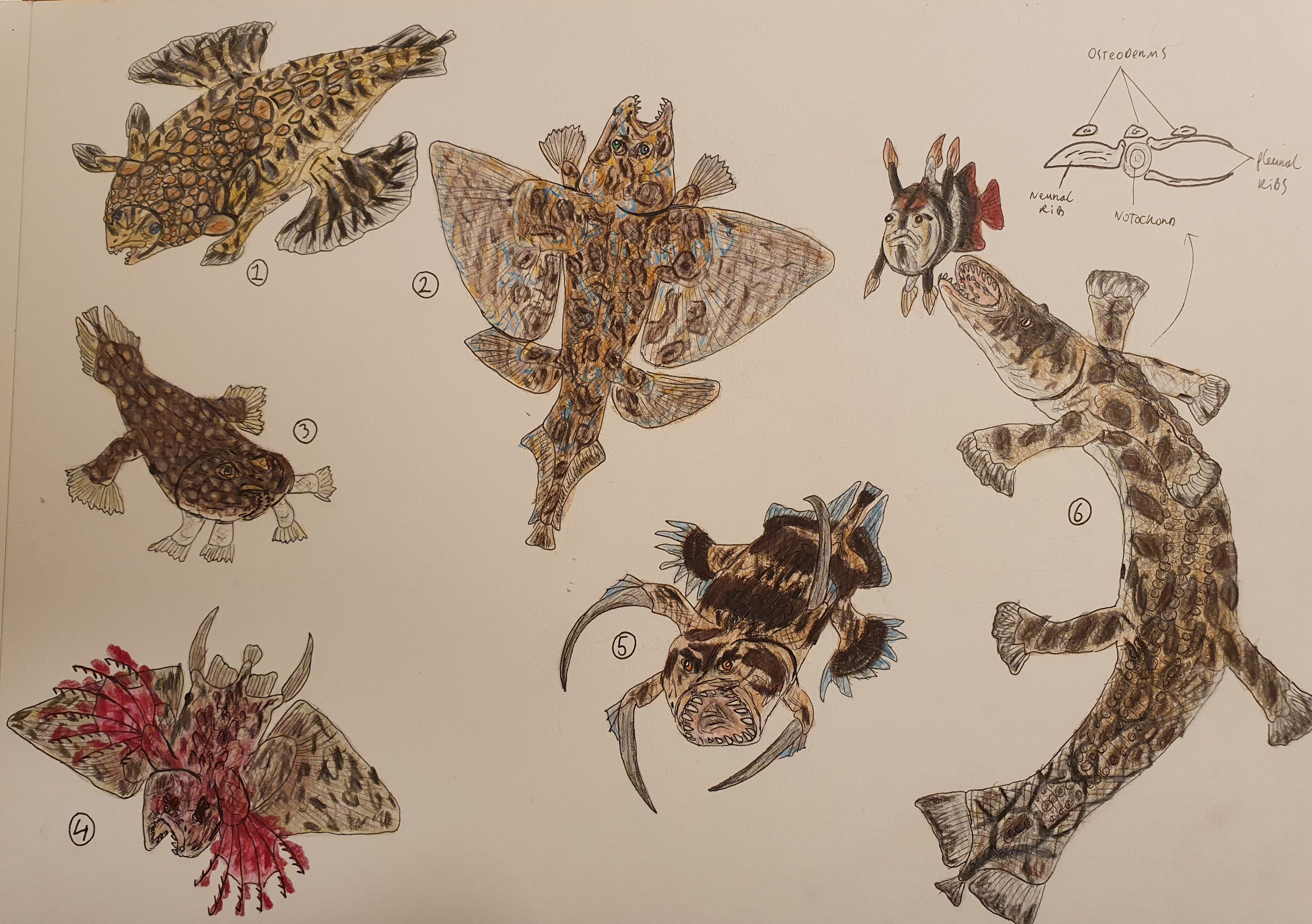HOME | DD
 DemonicManchot — Flattacanth diversity part 2
DemonicManchot — Flattacanth diversity part 2

#speculativeevolution #alternativeevolution #speculative_evolution #worldbuildingspecies #speculativeevolutionart #flattacanth #eryobis
Published: 2021-09-05 19:06:26 +0000 UTC; Views: 4247; Favourites: 53; Downloads: 5
Redirect to original
Description
The highly diverse flattacanths know many shapes and among them are some that take the asymmetry to another level. Besides the eyes and the color of the two sides, some flattacanths evolved enlarged fins on one side, or tougher scales or spikes.Illustrated here are some the more extreme flattacanths.
These ones have names because they are a little different from the regular flattacanths of my other post.
1) The Turtleplaice: this flattacanth has evolved a hard armor of osteoderms to protect it from predators. On the side facing the bottom the armor only encompasses the head and gill area, while on the the side facing up the armor extends along the 'lateral' line to the tail. The Turtleplaice swims with its dorsal and anal fin, using the pectoral and pelvic fins to steer.
2) The Dragondab: this species has insanely enlarged wing-like pectoral and pelvic fins on the upper side, while the fins on the lower side are small and foot-like. When on the sea floor, it scoots around with the lower fins and when the Dragondab has to flee it will 'fly with the enlarged fins, accommodated by the dorsal and anal fins.
3) The Monkstrutter: when normal flattacanths develop in the womb, the eyes on one side migrate to the other (depending on species, genes and sometimes sexe) and then they're born that way. Well the monstrutter took it a step further. As the eyes start migrating to, for example, the right side, the pectoral and pelvic girdles start moving to the left side. This results in a creature looking like a deformed hexaped frogfish. The Monkstrutter gets its name from its resemblance to the monkfish and from its way of moving. It struts on the sea floor with the pectoral and pelvic fins, using the dorsal and anal fins for bursts of speed.
4) The Gloveray: this flattacanth has enlarged wing-like pectoral and pelvic fins on its lower side, with the fins on the upper side being shaped like seaweed. The Gloveray hides its whole body in the sand except for the upper plant-like fins. The rays on these fins are barbed and are used to catch unsuspecting prey swimming by. The Gloveray swims like a ray from Earth, with its lower pectoral and pelvic fins.
5) The Stabfin flattacanth: perhaps the least asymmetrical of the bunch, but still an extreme form, the Stabfin has evolved the rays of its pectoral and pelvic fins into hard spines used for stabbing prey. This fish hides in crevices in reefs, and is one of the few fish that cannot swim, instead it walks with its dorsal and anal fins to get around.
6) The Haligar: this flattacanth might not look so different from regular species, but is a very strange adaptation. This flattacanth has evolved thick, specialized blade shaped neural ribs that bend down and osteoderms that only lie on the top side, right above the notochord and ribs. This bony armor gives the Haligar more attachment points for muscles and thus gives the fish more support. The Haligar lives in areas that often dry out or become isolated from other bodies of water, so the animal will sometimes have to move between ponds. The support of the osteoderms allow the fish not to collapse completely when moving over land. Here it is seen hunting a redtail bunny fish.

























